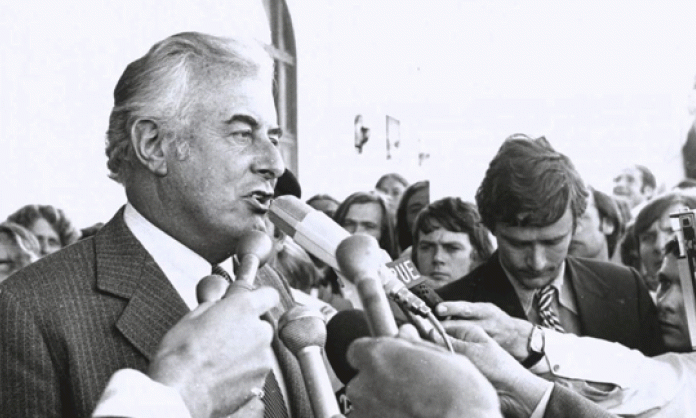Gough Whitlam has died at age 98. I await the torrent of tributes from politicians who will praise his government’s social reform program in Australia but who themselves have spent their entire careers trying to bury it – free education, expansion of welfare programs, land rights, women’s rights, improvements to public service conditions and so forth.
Whitlam’s was the last Labor government that actually introduced reforms that improved working class life as opposed to the “reform” agenda of subsequent governments that have stripped away the meagre protections afforded Australian workers.
But the Whitlam government was a product of its time: it emerged out of a wave of working class and student militancy in the last years of the long post-war economic boom. This drove Whitlam into terrain that no subsequent Labor government has gone.
Its main priority was to give Australian capitalism a new lease of life, modernising it by cutting tariffs, recognising China and expanding public health and education to improve productivity (i.e. the rate of exploitation).
It needed to do these in an environment where workers, students, immigrants and Aboriginal people were banging on the door demanding change.
Whitlam, although having the image today as a crusading reformer, was right wing. On taking over the leadership from Calwell in 1967 he pushed the party’s policy on Vietnam hard to the right; he purged the left wing Victorian branch and made an open pitch to the middle class.
He supported state aid to private schools, opposed union action on political issues and strongly backed the US alliance. Whitlam joined the Liberal government in denouncing the 1969 motion passed by Victorian unionists calling on Australian soldiers in Vietnam to mutiny. If the left in the party today hails Whitlam as its hero, its predecessors hated his guts.
The ruling class, which had been prepared to give him a go in his early years, turned on the prime minister in 1975 not because he was a mortal threat. The working class militancy which had driven his reform program did not abate during his term in office. In 1974 the strike rate peaked.
At the same time the world economic crisis arrived on Australian shores. The ruling class now demanded a savage attack on the working class to squash strikes and roll back wages and welfare reforms. The government tried to oblige. The reformist treasurer Jim Cairns was sacked and replaced by the right wing former Ipswich cop Bill Hayden. The new treasurer’s first budget put the whole reform program into reverse.
And when the crunch came, the limits to Whitlam’s reform project were demonstrated starkly. Whitlam came from the establishment – he was a QC whose father had been Crown Solicitor – and he never broke from it. When the ruling class turned on him in 1975, he capitulated.
While urging his supporters to “maintain your rage” against the Kerr Coup, his actions (helped in large part by the ACTU and left union leaders) demobilised the hundreds of thousands of working class Australians who saw the coup, rightly, as an attack on the things they had won. They were loyal to Whitlam as a symbol of the gains that they had made since the late 1960s. Whitlam, however, betrayed them by channelling their anger into an electoral contest which, once the mass campaign had been choked off, had only one possible outcome – a landslide to Malcolm Fraser.
The Labor leaders, crying today for Whitlam and waxing lyrical about the wonderful era of reform, have moved so far to the right that Fraser, the wealthy grazier from western Victoria and tool of big business, is now to their left. That is the best indicator of Labor’s entire trajectory since 1975 and confirmation that the party is an absolute barrier to a revival of the radicalism with which Whitlam is today so fondly (and wrongly) identified.





